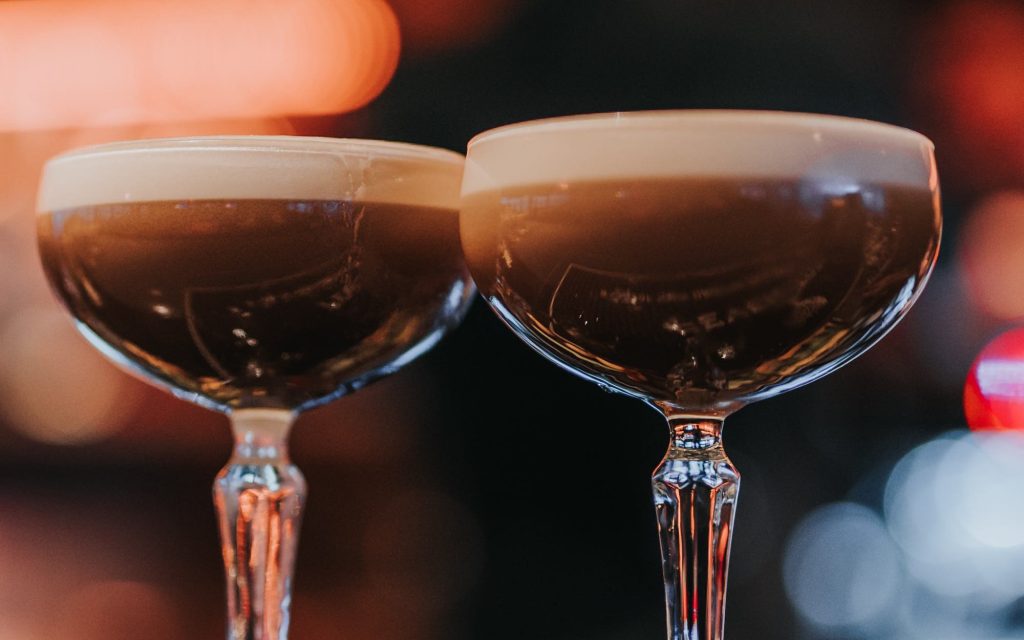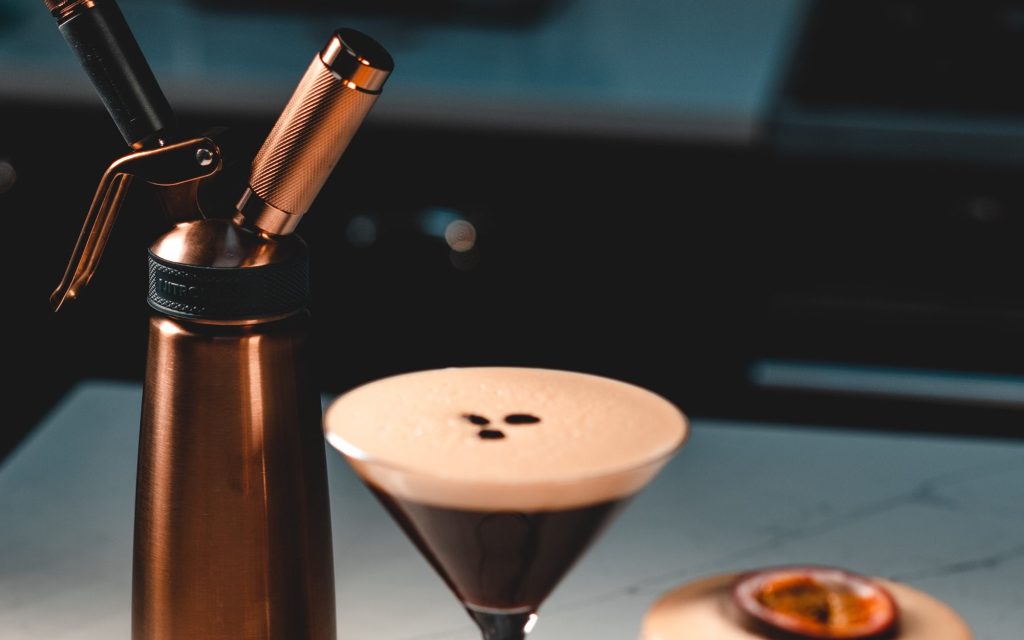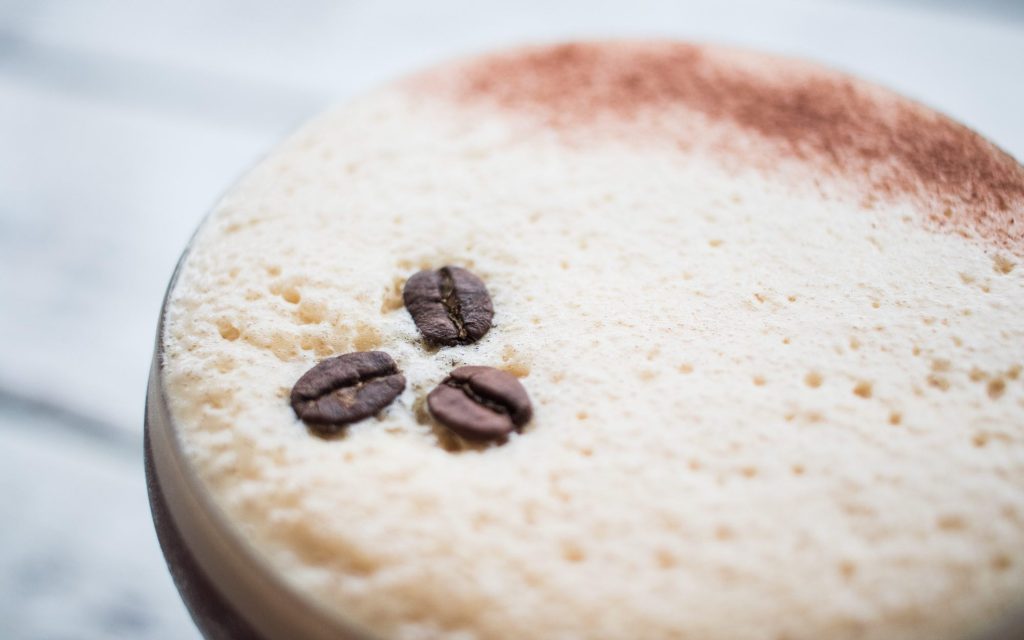Does specialty coffee need to move on from the espresso martini?
The espresso martini is perhaps the quintessential coffee cocktail. When done “right”, the drinking experience should be a sublime balance of ice-cold vodka, complex espresso, and sweet coffee liqueur.
Although the espresso martini is very much a product of the 1980s, the drink underwent a period of re-invention in the 1990s. Today, it’s experiencing something of a renaissance against the backdrop of ongoing nostalgia for Y2K aesthetic and fashion.
So how was the espresso martini invented, and what makes it such a classic cocktail? And does it really have a place in specialty coffee?
To find out, I spoke to Dan Fellows, two-time World Coffee in Good Spirits Champion, and Chris Nolte, co-founder and Managing Partner at Per’La Specialty Roasters.
You may also like our article on adding coffee cocktails to your menu.
Where did it all begin?
At the Soho Brasserie in London in the early 1980s (the exact year is up for debate), the legendary British bartender Dick Bradsell invented the espresso martini.
According to his daughter Bea, a supermodel approached the bar and requested he make her a drink that would “wake her up and [mess] her up”. Contrary to popular belief, the model in question was not Naomi Campbell or Kate Moss – and they still remain unknown.
In any case, the Soho Barasserie had just installed a new espresso machine. As per the customer’s request, Bradsell added a shot of espresso to coffee liqueur and vodka, shaken and then poured over ice in a tumbler. The tradition of serving the cocktail in a martini glass didn’t really start until the 1990s when flavoured martinis became more popular.
For his original espresso martini, Bradsell added the following ingredients:
- A 25ml “ristretto” shot of illycaffè’s Classico blend
- 50ml of Wyberova rye-based vodka
- 15ml Kahlúa coffee liqueur
- 10ml of Tia Maria cold brew liqueur
- A dash of sugar syrup
To honour her late father’s recipe, Bea recommends to “shake it like you hate it”, which helps to create the distinctive foam head. Finally, Bradsell garnished the cocktail with three coffee beans.

The secret to the espresso martini’s success
In recent years, coffee cocktails across the board have become immensely popular. Similarly, the spike in craft and small batch coffee liqueurs has certainly helped push for higher-quality coffee-based alcoholic beverages.
When made to Bradsell’s (or a similar) recipe, it’s easy to see why the espresso martini has become so iconic. The result is a wonderfully balanced, silky smooth cocktail.
Chris Nolte is the co-founder of Per’La Specialty Roasters in Miami, Florida.
“It’s very easy to understand this cocktail, it’s approachable and comfortable,” he says. “You know what a martini is and you know what espresso is. I also think the combination of alcohol and coffee is a classic balance.”
Despite its popularity, however, the drink has earned a reputation among bartenders and baristas.
Dan Fellows is a coffee and cocktail content creator. He admits the espresso martini is “actually really hard to do exceptionally well”.
A large part of this is because many bars and restaurants – even including more high end venues – either don’t use specialty-grade coffee or haven’t received formal training to dial in coffee to high enough standards.
While Bradsell’s recipe called for a commodity-grade dark roast espresso blend, more and more baristas and bartenders have recognised that coffee quality plays an integral role in the cocktail.
“When you talk to bartenders, it’s clear that a lot more labour goes into the espresso martini compared to other traditional cocktails,” Chris tells me.

How to elevate the drink
Given how popular coffee cocktails have become in recent years, it makes sense that coffee shops would want to serve them. Without the right resources and training, however, quality could easily slip.
First and foremost, Dan emphasises that using good quality coffee is integral to preparing an exemplary espresso martini.
His recipe calls for 40g of espresso extracted at a 1:2 or 1:2.2 ratio, and Dan recommends using a coffee with notes of chocolate and some citrus flavours.
The next step, Dan adds, is to find a spirit that complements this flavour profile. For his recipe, he uses 20ml of both white rum and vodka kept chilled to minimise dilution.
Rather than using coffee liqueurs like Kahlúa or Tia Maria, Dan recommends adding 20ml of a homemade (and also zero-waste) coffee saccharum. This is a syrup made by blending sugar with used coffee pucks.
The final ingredient in Dan’s recipe is 1g of saline solution – which helps to highlight the more complex flavours. Lastly, once all the ingredients are added to the shaker, he recommends shaking vigorously with plenty of high-quality ice, and then double straining into a chilled coupe cocktail glass.

But is it time to move past the espresso martini?
There’s no denying that the espresso martini is an absolute classic cocktail. But has it been done to death?
We have to appreciate how the drink – and pioneering bartender Dick Bradsell – has paved the way for further innovation with adding coffee to cocktails and mocktails.
There have been, however, a number of eyebrow-raising variations of the beverage in recent years – including grating parmesan over the top – which may indicate that its popularity is waning.
While there may be some method to the madness, Dan doesn’t exactly sing its praises. “I don’t hate it but I don’t love it either,” he says.
Looking for inspiration elsewhere
The world of coffee cocktails extends much further beyond the espresso martini. We only have to look at competitions like World Coffee in Good Spirits and Coffee Masters to see the endless possibilities – including adding coffee to drinks such as the negroni and the spritz.
Additionally, the popularity of cold brew has also inspired a number of high-quality coffee cocktails. The complex sweetness of cold brew can often be more complementary to a number of spirits, and helps to minimise the more bitter flavours in espresso.

When it comes to cocktails, respecting the classics is certainly encouraged. At the same time, however, allowing room for creativity and reinvention is key.
We should honour and celebrate the espresso martini for what it is. And while it can certainly be elevated by using high-quality ingredients, it’s also clear that other coffee cocktails are also taking up more of the spotlight – and will continue to do so.
Enjoyed this? Then read our article on six summer cocktails you can make at home.
Perfect Daily Grind
Want to read more articles like this? Sign up for our newsletter!
Source: Perfect Daily Grind



